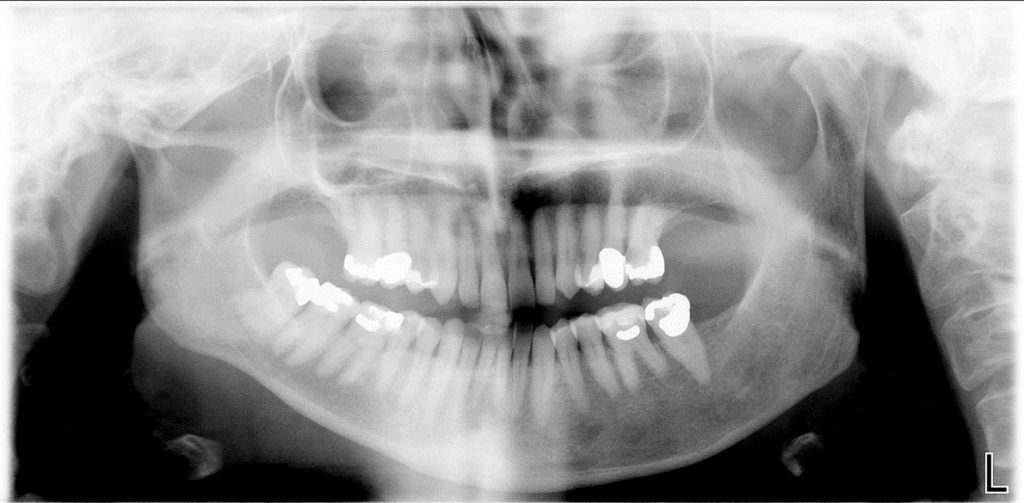TMJ Developmental Disorders .
- The most common developmental abnormalities are: Condylar Hyperplasia and Condylar Hypoplasia.
- The abnormalities are usually unilateral.
- The cortical thickness and the trabecular pattern of the condyle are usually normal.
- Condylar Hypoplasia
- Hypoplastic condyle generally has normal shape and diminished size.
- Condylar neck is thinner and shorter.
- Joint space may be increased.
- Ramus and mandibular body may be hypoplastic resulting to facial asymmetry, hemifacial microsomia, mandibular retrognathism and malocclusion.
- Condylar Hyperplasia
- Hyperplastic condyle may have normal or irregular shape and is enlarged.
- Condylar neck is longer and enlarged.
- Glenoid fossa may be enlarged.
- Joint space may be reduced.
- Ramus and mandibular body may be hyperplastic resulting to facial asymmetry, hemifacial hypertrophy, mandibular prognathism and malocclusion.




